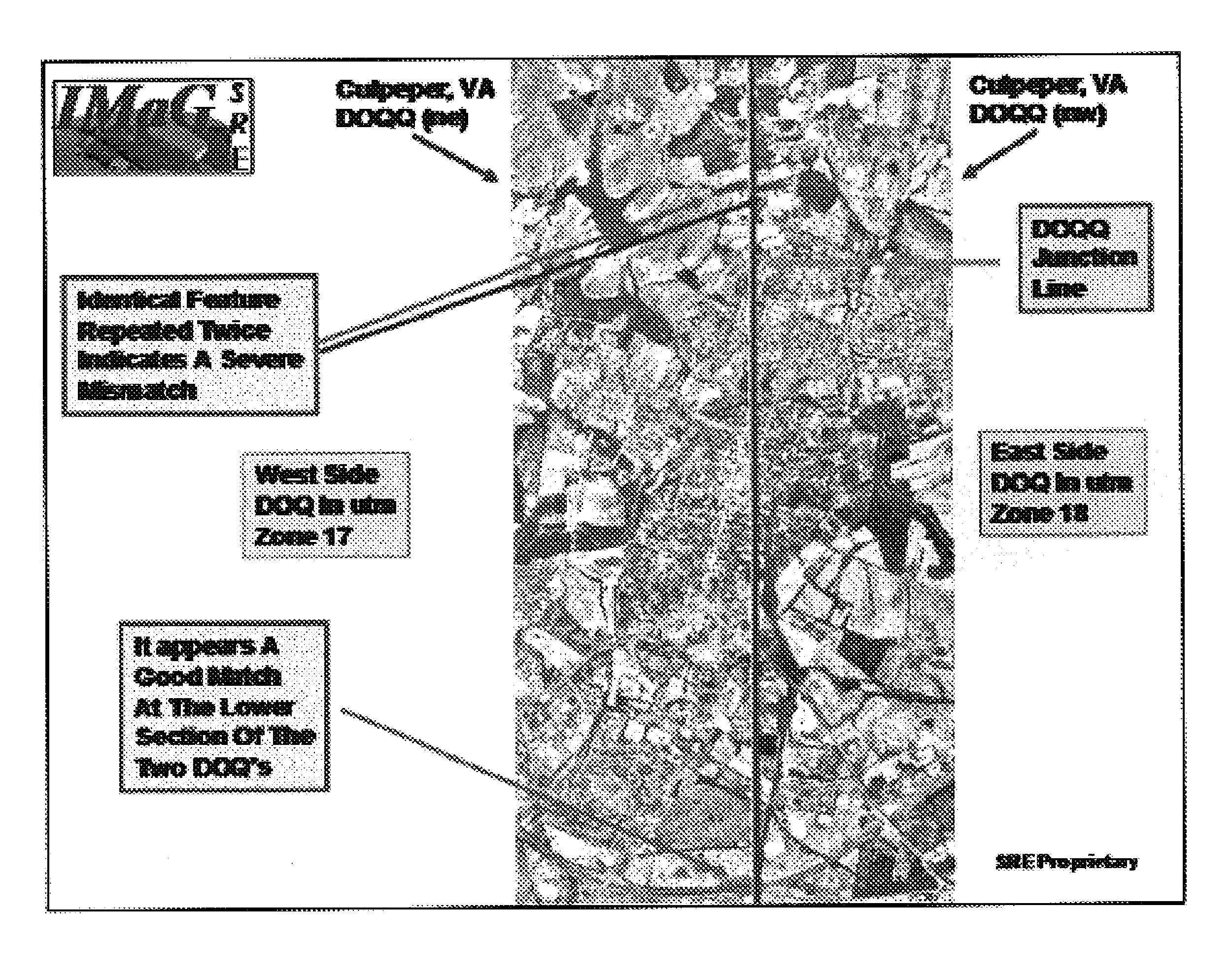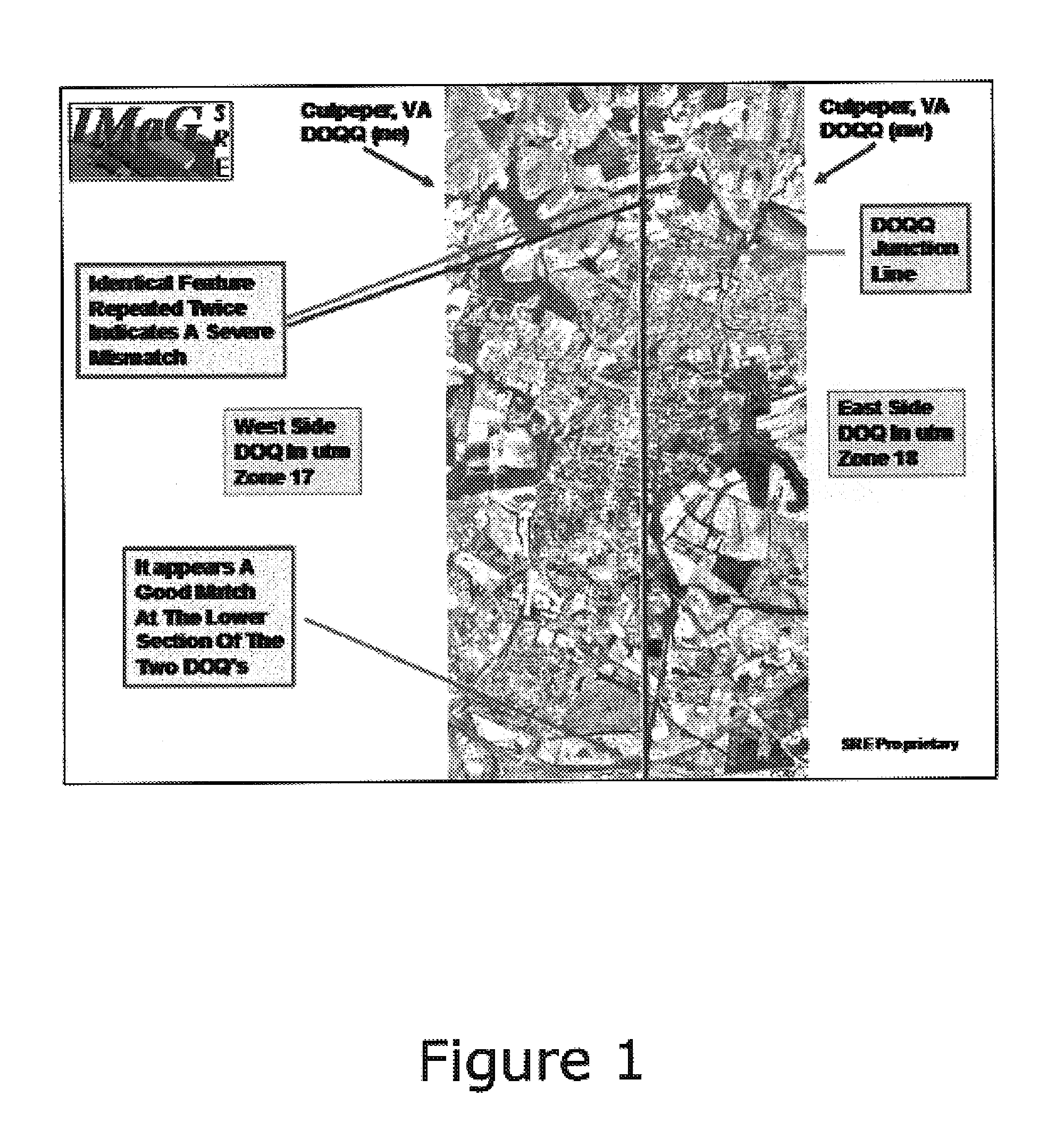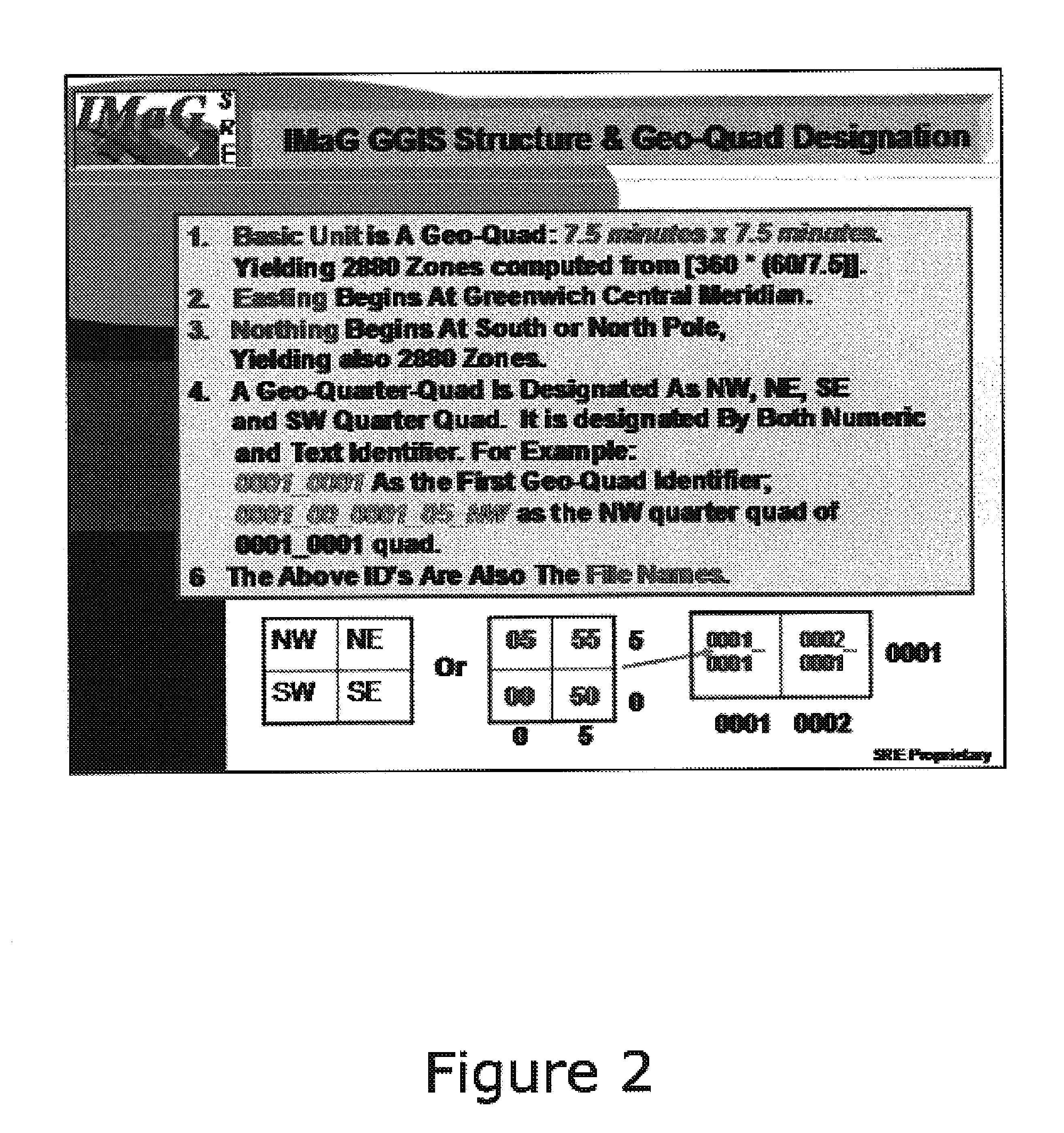Method of recognizing an object in an image using multi-sensor integration through conditionally optimal geoscene generation and registration
a multi-sensor image and object technology, applied in scene recognition, instruments, computing, etc., can solve the problems of image users not considering the reality of the shape of the pixels of the ikonos imagery, information extraction from multi-sensor images is usually a more difficult procedure, and the world over remote sensing researchers have assumed these satellite images have square pixels
- Summary
- Abstract
- Description
- Claims
- Application Information
AI Technical Summary
Benefits of technology
Problems solved by technology
Method used
Image
Examples
Embodiment Construction
[0060]The method of the present invention begins with generating geoscenes using four different models. A geoscene is defined in terms of an image in which every pixel is denoted by four locational identification systems:[0061]a) (x,y) coordinates in the image domain;[0062]b) UTM or VTM coordinates in the map projection domain;[0063]c) decimal degree in the geospatial domain; and[0064]d) degrees, minutes and seconds in the geospatial domain.
[0065]Several tools exist to perform conversions between or among various coordinate systems. First, a bi-directional method for conversion between lat-long and UTM is required. Basic methods for two-way lat-long to UTM conversions are provided in Wolf and Ghilani in Elementary Surveying: An Introduction to Geomatics (New York: Prentice Hall, 2002). However, a superior method of performing such conversions is provided by the present invention.
[0066]In the UTM system, the geographic location of each zone is fixed. Consequently, the central meridia...
PUM
 Login to View More
Login to View More Abstract
Description
Claims
Application Information
 Login to View More
Login to View More - R&D
- Intellectual Property
- Life Sciences
- Materials
- Tech Scout
- Unparalleled Data Quality
- Higher Quality Content
- 60% Fewer Hallucinations
Browse by: Latest US Patents, China's latest patents, Technical Efficacy Thesaurus, Application Domain, Technology Topic, Popular Technical Reports.
© 2025 PatSnap. All rights reserved.Legal|Privacy policy|Modern Slavery Act Transparency Statement|Sitemap|About US| Contact US: help@patsnap.com



